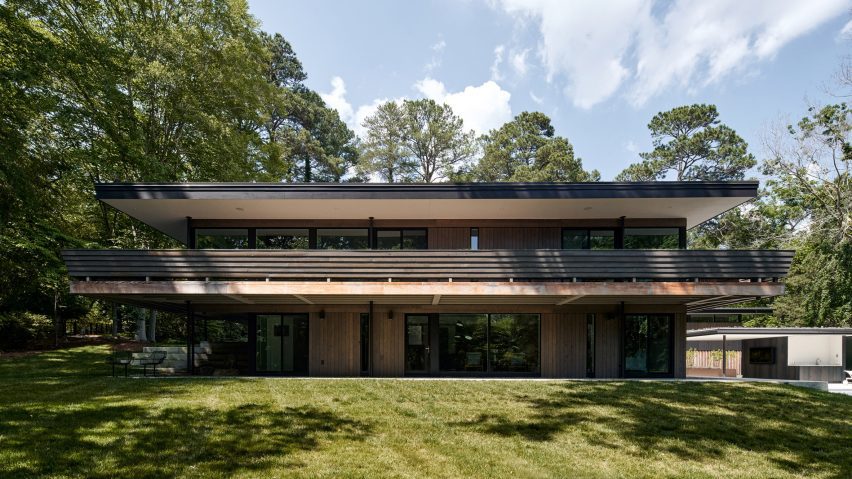
In Situ Studio overhauls James Taylor's childhood home
In Situ Studio has renovated and expanded the mid-century modern childhood home of musician James Taylor in Chapel Hill, North Carolina, into a multi-building complex for two art collectors.
Raleigh-based architecture firm In Situ Studio transformed the 4,200-square foot (390-square metre) residence – known as Morgan Creek – for New York-based art collectors Eric Diefenbach and James Keith Brown, who purchased the property at auction.
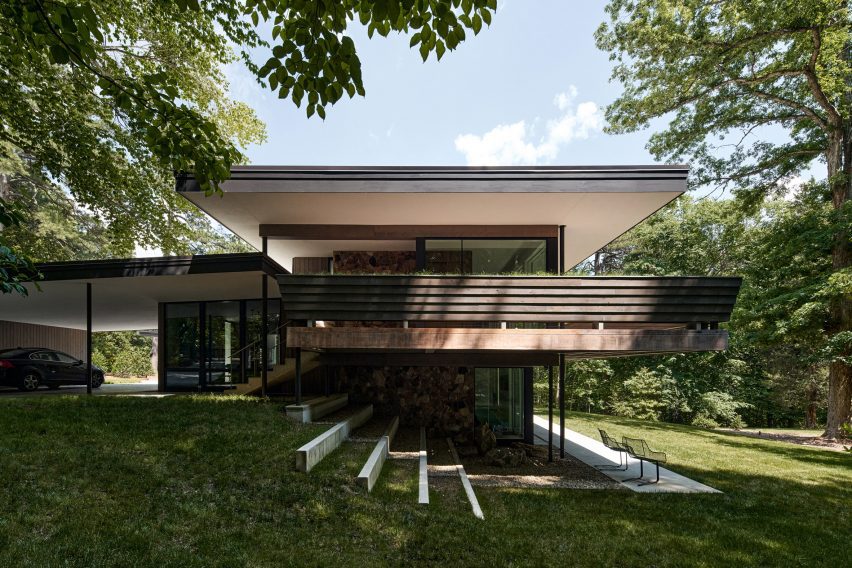
The new owners wanted to rediscover the vision of the original architect George Matsumoto, renovate the existing house, rebuild the guest house and add a new pool and pool house.
"The 24-acre property had been neglected for more than a decade, so our work involved refreshing finishes, opening under-lit spaces to the landscape, solving sources of water damage, and shaping a landscape to unify the domestic complex," said In Situ Studio founder Matt Griffith.
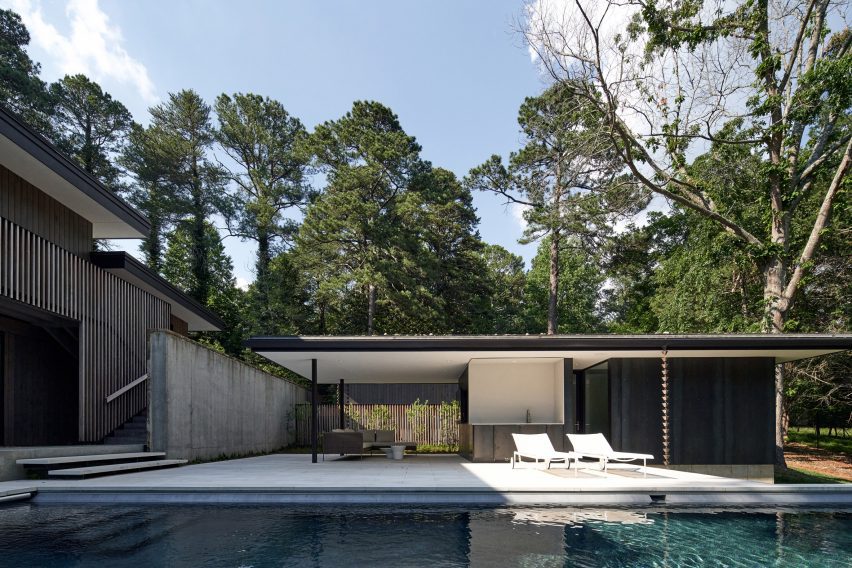
The main 1952 split-level house was gutted and rebuilt with new windows, interior and exterior windows, building systems, stucco soffits, porch planter and an additional deck and a staircase on the east end.
The basement level has two bedrooms and a den that opens to the pool deck.
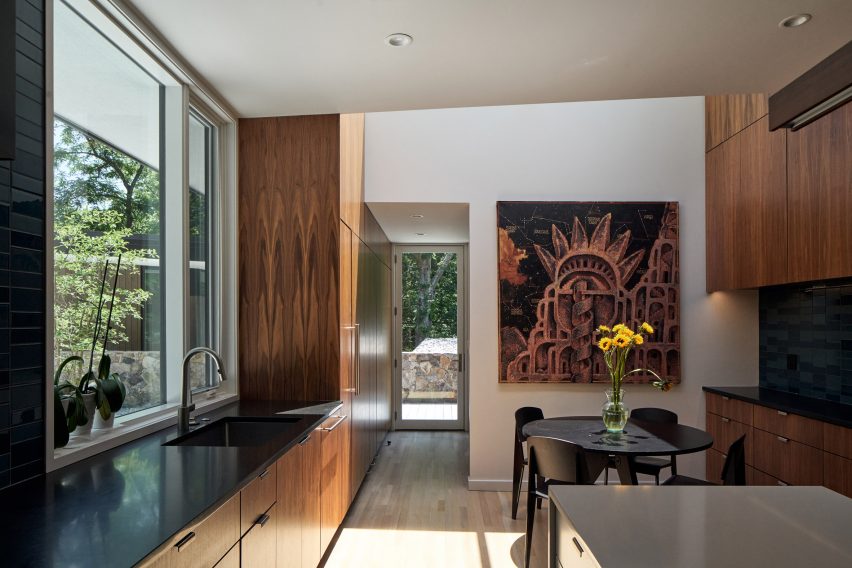
Above, the program of the main level follows the original layout; however, the living room was divided with a wooden screen to create a sitting room that serves as a buffer to the primary suite.
The living room fireplace – which incorporates the original stone lintel and hearth – was wrapped in a stone finish to echo the concrete additions to the exterior. The original pine floors were refinished and new paneling was added.
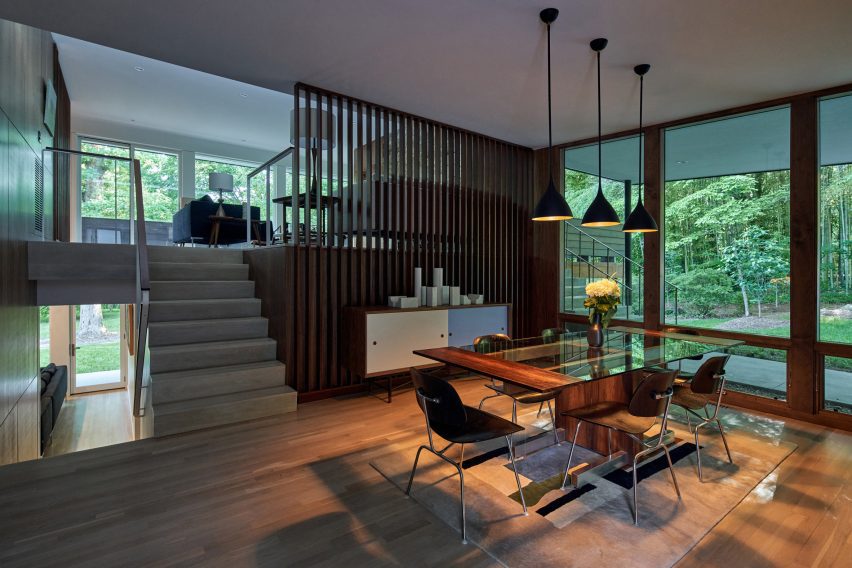
"The materials were selected to be beautiful, contextually sensitive, quiet, and durable," Griffin told Dezeen. "Wood and stone used were both local to the area, and the tactile qualities of exterior material choices are echoed in the qualities of interior materials."
The basement and main levels are connected by the offset dining room and kitchen, which was completely rebuilt with a large skylight. The connecting stair has a bent metal railing that continues up to the top floor.
The original guest house was demolished and a new, two-bedroom dwelling was built on its foundation using a "roof form that is sympathetic to the main house" with deep overhangs.
"The new pool and pool structure are different from the house and guest house, but made of complementary materials and are quiet enough in form and scale to not dominate the original structures," Griffith said.
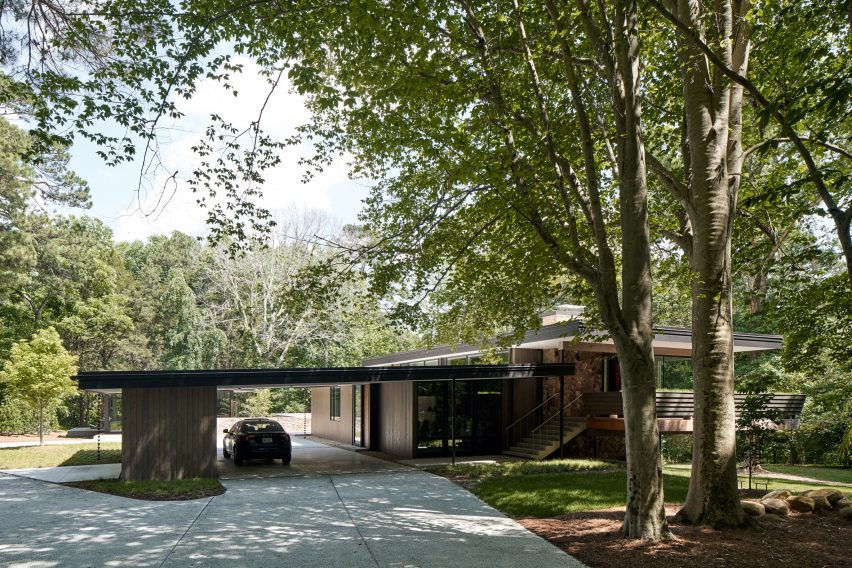
"The design seeks connection with North Carolina Piedmont landscape by opening structures to significant views, creating new spaces between structures, and siting new structures in a manner sensitive to the topography," he continued.
In Situ Studio is the fourth team to work on the Morgan Creek residence. After George Matsumoto's original designs, local architect John Latimer completed the house and modernist architect Arthur Cogswell renovated the kitchen.
The team has experience refurbishing mid-century modern homes in North Carolina, having overhauled a 1959 brick ranch-style home in Raleigh in 2017.
The photography is by Cristóbal Palma.
Project credits:
Client: Eric Diefenbach and JK Brown
Contractor: BuildSense
Landscape architect: Gregg Bleam Landscape Architect
Structural engineer: Kaydos Daniels Engineers
Cabinetry: Xylem, Inc.